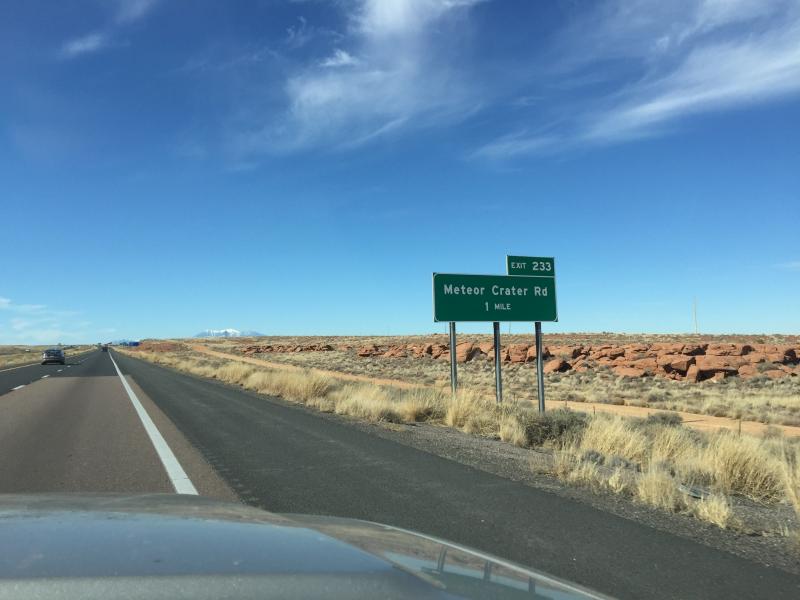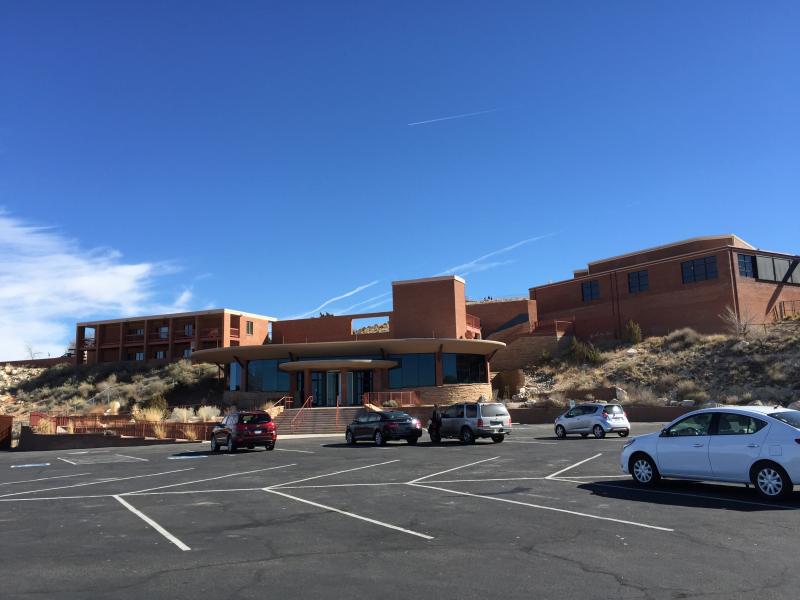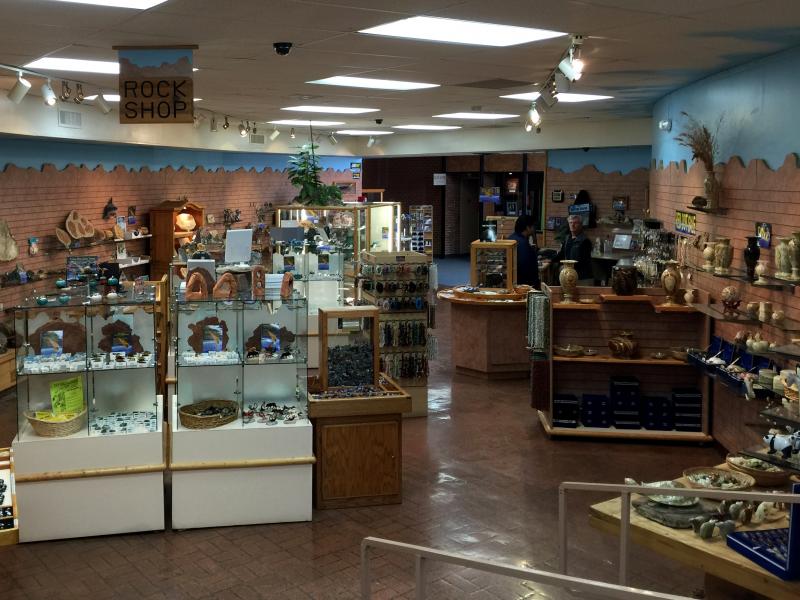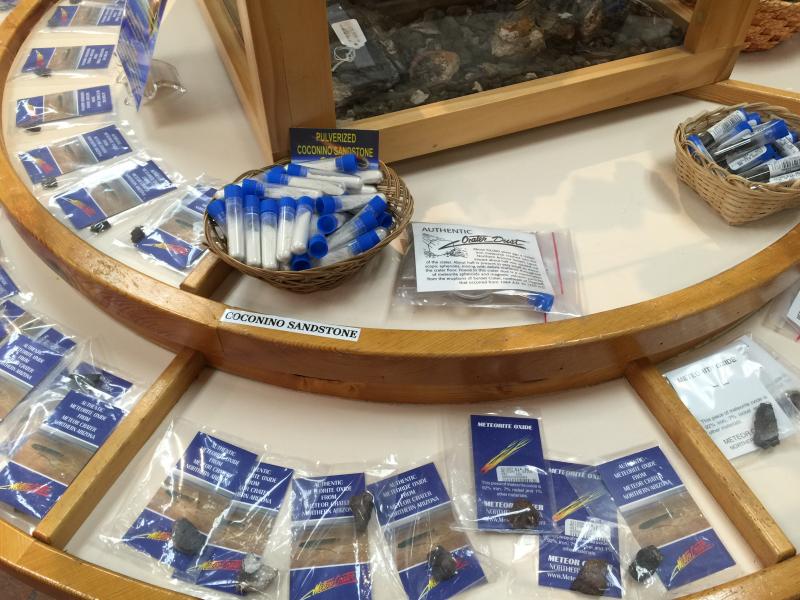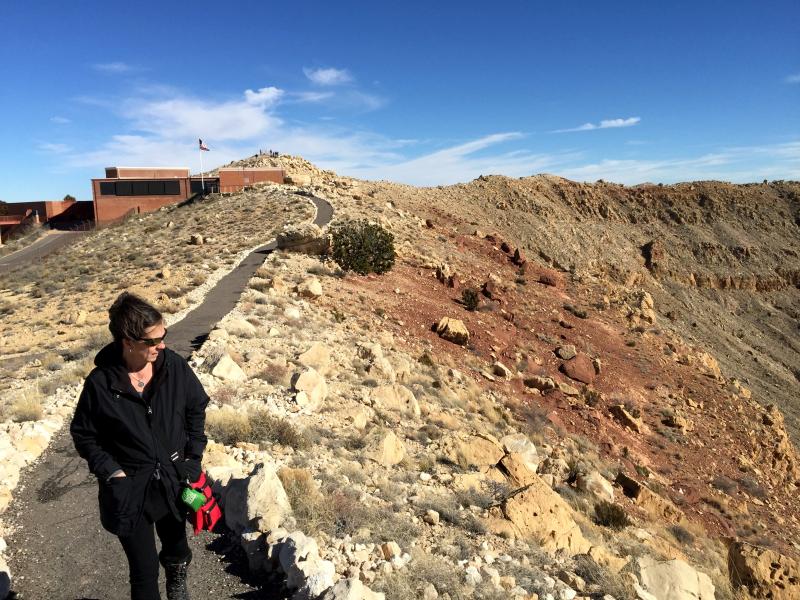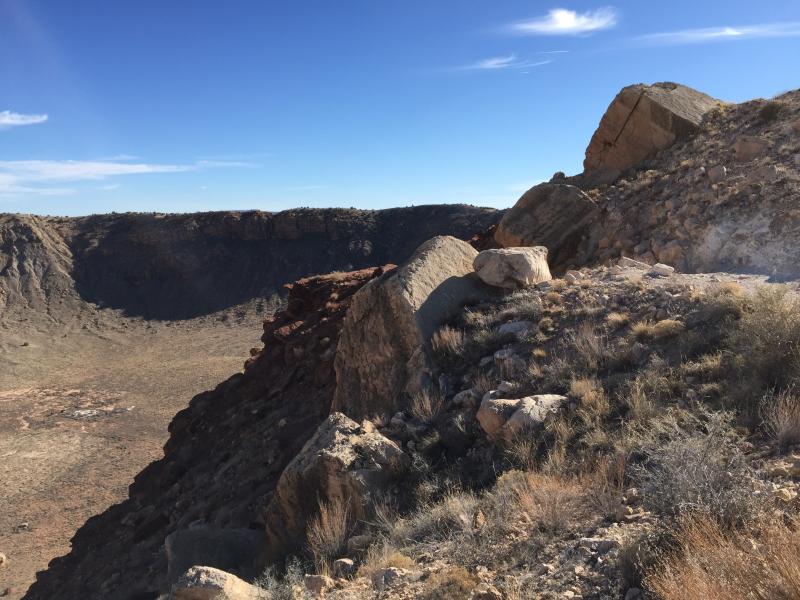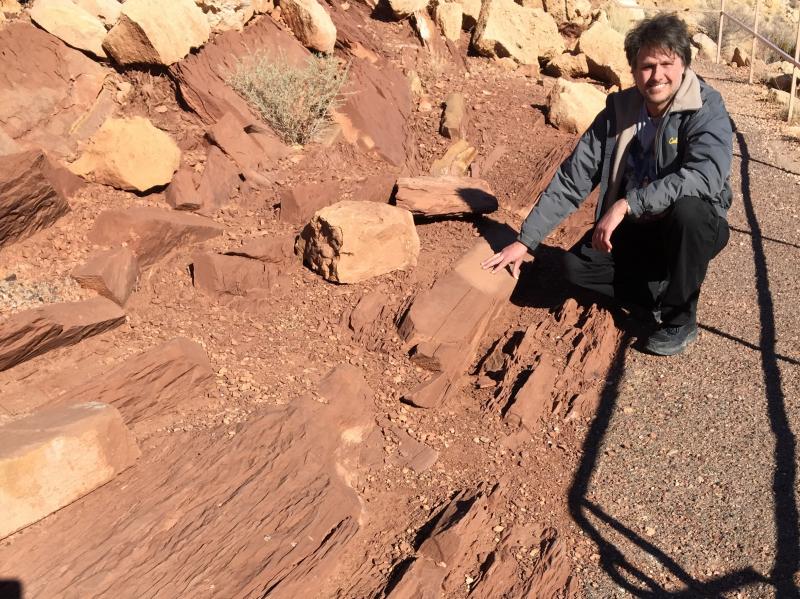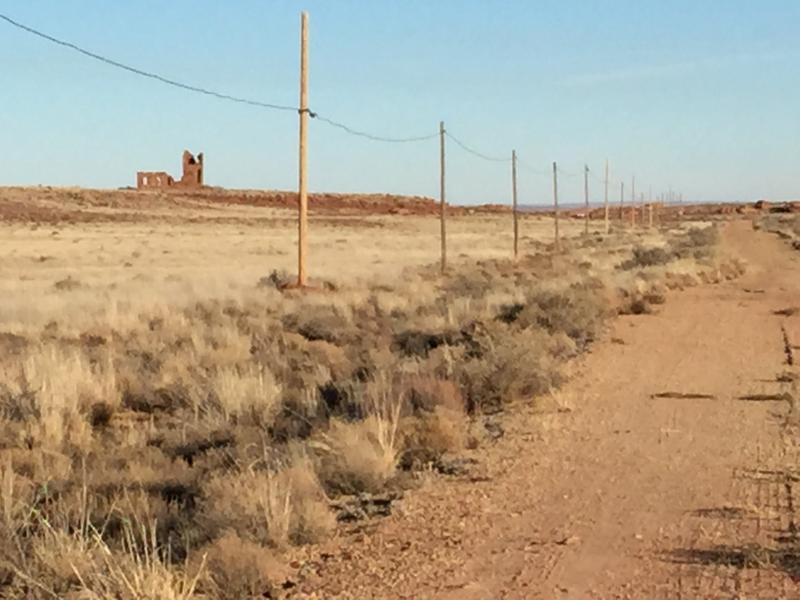United States Meteorite Impact Craters
- Home
- Crater Identification
- Alamo, Nevada
- Ames, Oklahoma
- Avak, Alaska
- Barringer, Arizona
- Beaverhead, Montana
- Chesapeake Bay, Virginia
- Cloud Creek, Wyoming
- Crooked Creek, Missouri
- Decaturville, Missouri
- Decorah, Iowa
- Des Plaines, Illinois
- Flynn Creek, Tennessee
- Glasford, Illinois
- Glover Bluff, Wisconsin
- Haviland, Kansas
- Kentland, Indiana
- Manson, Iowa
- Marquez, Texas
- Middlesboro, Kentucky
- Newporte, North Dakota
- Odessa, Texas
- Red Wing, North Dakota
- Rock Elm, Wisconsin
- Santa Fe, New Mexico
- Serpent Mound, Ohio
- Sierra Madera, Texas
- Upheaval Dome, Utah
- Weaubleau, Missouri
- Wells Creek, Tennessee
- Wetumpka, Alabama
- Possible Impacts
- User-submitted Possibles
- Open Questions
- About This Website
Barringer CRATER, Arizona
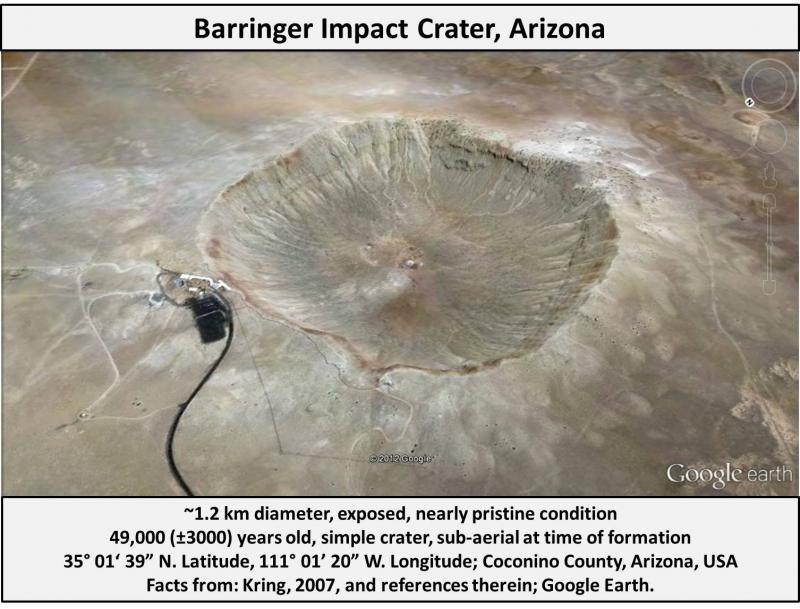
The famous 'Meteor Crater' of Arizona. The Barringer Crater is a 1.2 kilometer simple, bowl shaped crater formed about 50,000 years ago by an iron impactor about 30 meters across. The crater is extremely well preserved, and is open to the public for viewing. An interpretive center is located at the crater rim, and camping and RV facilities are available. Short tours along the crater rim provide background and present an opportunity for questions and photographs.
Many fragments of iron-nickle meteorite associated with the impact have been found at this crater. No collecting is allowed in or around the crater, though many examples of the meteorite, a large number of which were gathered in the first half of the 20th century, are available int he marketplace. The last time I visited, samples of both the meteorite and its weathered remnants were available for purchase in the gift shop, along with a variety of other intersting items, including mm scale impactite spherules found around the crater.

An impact origin for each location listed on this website has been supported by unambiguous diagnostic evidence of hypervelocity impact that has been reported in a scientific (usually peer reviewed) context. Without such evidence, a geological structure is not a confirmed impact crater. This section, which is included for each crater on this website, is not an exhaustive list of such published evidence, but is meant to demonstrate that appropriate work has been done.
Chao, E. C. T., Shoemaker, E.M. and Madsen,B.M., First natural occurrence of coesite. Science, v. 132, pp. 220-222. 1960
Chao, E. C. T., Fahey, J.J., Littler, J. and Milton,D.J., Stishovite, SiO2, a very high pressure new mineral from Meteor crater, Arizona. Journal of Geophysical Research, v. 67, pp. 419-421. 1962.
Nature of published diagnostic evidence:
- coesite and stishovite
- directly associated meteorite
Other published (suggestive) evidence:
Morphology, breccias, impact melts. (This is one of the best studied craters in the world.)
A Visit to the Barringer Impact Crater:
Barringer Crater, also known as Meteor Crater, Arizona, or Canyon Diablo Crater, is one of the world's youngest, most extensively studied, and best preserved meteorite impact craters. The location has been extensively developed as an educational and interpretive facility. Buildings, parking, and trails have been put in place both to protect the crater and to maximize the visitor's opportunity to view and learn about the structure.
Barringer Crater is located at the end of a clearly marked paved road, a few miles south of Interstate 40, between Winslow and Flagstaff, Arizona. Meteor Crater Road is accessed from exit 233. The location is clearly identified on both highway and private signs.
Though there is little else in the immediate area, Flagstaff and Winslow are both within an hour's drive, and a fuel station and RV campsites are available near the entrance to Meteor Crater Road, just a few miles from the crater. There is also a restaurant at the crater museum and interpretive facility.
Driving south from Interstate 40, on Meteor Crater Road, the raised rim and proximal ejecta blanket of the crater becomes visible from several miles away, and it dominates the horizon as you approach the interpretive center on the crater rim.
Barringer Crater is a National Natural Landmark. It is about 1.2 km in diameter, and is about 170 meters deep. It is only about 50,000 years old, and is extraordinarily well preserved. Most of the crater rim is still present and well defined.
The impact crater is privately owned by the Barringer family, through the Barringer Crater Company. The family has done a great deal to support research in the field of astrogeology and impact crater research science. A visitor center, combining interactive educational exhibits, crater history, gift shop, and crater viewing and guided tour opportunities, has been built into the crater rim. The visitor center is open daily, during all seasons. The official crater website with further visitor information can be found at .
While hunting meteorites in the area is strictly forbidden,the Barringer Crater visitor center contains a gift shop at which visitors can scratch a collecting itch by purchasing small, heavily oxidized examples of the associated iron meteorite at surprisingly reasonable prices, as well as other geological and decorative oddities.
For scientists, students, and serious collectors, the gift shop also makes available very reasonably priced samples of the Coconino Sandstone 'rock flour', in which the high pressure mineral polymorph of quartz, coesite, was first discovered in an impact crater environment, as well as samples of the ejecta-bearing sand from outside the crater rim, in which countless small iron spherules are found. Research has shown that these spherules account for the bulk of the impacting meteorite. The iron condensed from vapor in the post-impact plume, and rained out of the sky down range from the impact.
Barringer Crater was formed by the impact of a small asteroid, the remnants of which are referred to as the Canyon Diablo meteorite. Canyon Diablo is a type IAB-MG iron nickel meteorite. The largest fragment of the impactor found to date is the Holsinger meteorite, which weighs about 639 kg, or over 1400 lbs. It is on display in the Visitor Center museum area.
The Meteor Crater Visitor Center museum offers a wide range of interpretive and educational displays relating to the history of the crater, spaces science, and impact related astrogeology. Many of the exhibits are interactive. Dioramas allow visitors to take pictures as if they were standing on the moon-like floor of the crater or with an astronaut. Consoles encourage people to simulate asteroid impact parameters such as velocity, impactor mass, and impact angle, and then view the resulting crater formation. And displays of samples of impact related rock formations, cross sectional maps of the crater, and introductions to the faces and names of the scientists and explorers who have worked at the site engage visitors in a real understanding of Meteor Crater's contribution to our understanding of our place in solar system history.
A paved and wheel chair accessible trail, starting at the visitor's center, provides remarkable viewing along the top of the crater rim. To say that the view is astounding doesn't capture the experience. The astoundingly well-preserved crater appears as if it could have been blasted out of the ground within recent decades. It is deeper than the height of the statue of liberty, and the downtown area of San Francisco could sit in the crater floor. The rim is nearly always windy, since the compressed and overturned rock still rises nearly 200 feet, or 61 meters, above the flat, surrounding plain. The huge, deep blue desert sky of Arizona looks as if you could reach out and touch it, and one becomes acutely aware of how vast the emptiness of space is beyond that blue veil, and of what adventures, dangers, and opportunities await us there.
Barringer crater is about 1.2 km, or about 3/4 of a mile, in diameter, and about 170 meters, or about 560 feet, in depth. The average height of the rim is about 45 meters, or a little under 150 feet. It was formed by the impact of an asteroid measuring somewhere around 50 meters, or about 160 feet, in diameter, which was traveling somewhere between about 28,000 and 45,000 miles per hour, or about 28 to 45 times as fast as the fastest bullets ever fired from a conventional rifle.
Guided tours of the crater, starting at the interpretive Visitor's Center, are provided at regular intervals. The crater's website offers larger group tours by arrangement. The tours are delivered by knowledgable personnel, and are solidly based in a current best understanding of impact science. They provide a substantive introduction to the history of the crater and its exploration, to the basics of impact science, and to some of the impact-produced geological phenomena visible in and around the astrobleme. The structure shown in the picture above was used to store dynamite during early attempts at mining the crater for iron.
Explosive excavation during a large meteorite impact event pushes soil and rock at the crater rim upward and outward, away from the point of impact. Rock layers at the top of the crater rim can be vertical or completely overturned, as shown above. Barringer is one of the first studied and best studied impact craters in the world. Many of the classic features of large meteorite impact craters are clearly visible here, and quite a few of them were initially described and named from this locality, before they were observed elsewhere.
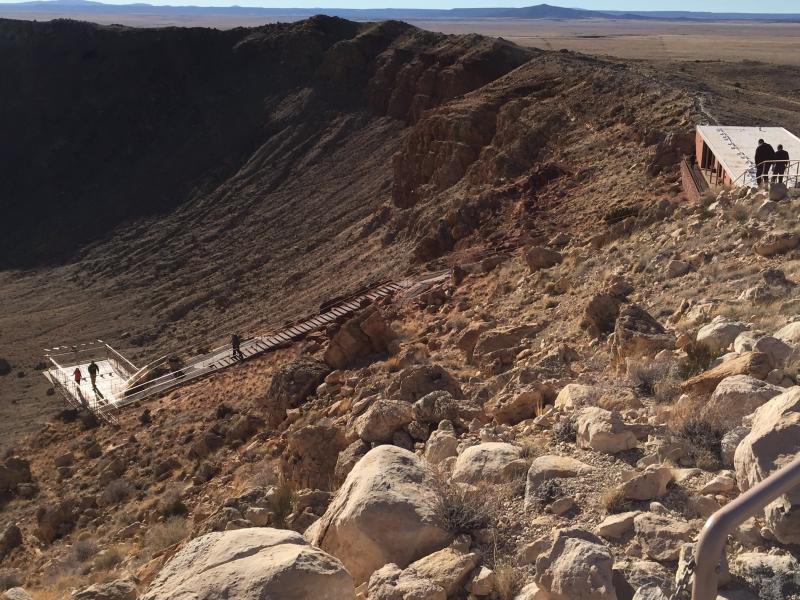
The nearly vertical beds of Moenkopi sandstone shown in the picture above were originally the uppermost layer of sediment, at the time of the impact. In the post-impact crater rim, this layer is folded back upon itself, and is overlain by Kaibab, Toroweap, and Coconino rock units that were originally underneath it. Looking out across the crater, the layers can be seen in order, and then repeated in reverse order where they overlie themselves in the raised and overturned rim.
A side note on the way to the crater: In the distance, to the east, on the south side of the interstate, near the entrance to Meteor Crater Road, you can see the ruined remnants of Harvey Nininger's American Meteorite Museum. Though his museum is only a memory now, Nininger's research and educational work contributed substantially to the emergence of the modern disciplines of meteoritics and impact science.
Bibliography and References:
(If links to articles don't work, don't give up. Try pasting the link shown into a search engine or searching for the article authors, title, or other reference information. If your research leads you to additional scientific references related to this crater, please help improve this resource by sending a note with the new citation(s) to: )
Note: The following bibliography benefits substantially from the significant work done by David Kring in his 2007 Guidebook, listed below. Kring, 2007, is probably the best introductory and summary text currently available for this crater.
Ackermann H. D., Godson R. H., Watkins J. S. (1975) A seismic refraction technique used for subsurface investigations at Meteor Crater, Arizona: Journal of Geophysical Research, 80, pp. 765–775.
Alexander E. C. Jr., Manuel O. K. (1958) Isotopic anomalies of krypton and xenon in Canyon Diablo graphite. Earth and Planetary Science Letters, Volume 2, pp. 220-224.
Anders E., Lipschutz M. E. (1966) Critique of paper by N.L. Carter and G.C. Kennedy, ‘Origin of Diamonds in the Canyon Diablo and Novo Urei meteorites.’ Journal of Geophysical Research, Volume 71, pp.643-674.
Artemieva N. A. (2006) Size and velocity of Canyon Diablo meteorite - models comparison (abstract). Meteoritics and Planetary Science, Volume 41, p. A17.
Barnes W. C. (1934) The "discovery" of Meteor crater. Museum Northern Arizona (Flagstaff). MuseumNotes, Volume 7, pp. 5-8.
Barringer B. (1964) Daniel Moreau Barringer (1860-1929) and his crater (The beginning of the Crater Branch of Meteoritics). Meteoritics, Volume 2, pp. 183-199.
Barringer D. M. (1905) Coon Mountain and Its Crater Source: Proceedings of the Academy of Natural Sciences of Philadelphia, Volume 57, pp. 861-886.
Barringer D. M. (1910) Meteor Crater (formerly called Coon Mountain or Coon Butte) in northern central Arizona. Paper presented at the National Academy of Sciences, Princeton University, Nov. 16,1909. 24 p. (plus 18 plates, and 3 maps).
Barringer D. M. (1914) Further notes on Meteor Crater, Arizona. American Journal of Science, Volume 39, pp. 482-483.
Barringer D. M. (1924) Further notes on Meteor crater in northern central Arizona (No. 2). Proceedings of the Academy of Natural Sciences of Philadelphia, Volume 76, pp. 275-278.
Bennett J. H., Manuel O. K. (1967) On the origin of noble gas anomalies in Canyon Diablo graphite. Earth and Planetary Science Letters, Volume 3, pp. 95-100.
Bingham W. F. (1937) Summary of findings from exploration, geophysical survey, and test-drilling at Meteor crater, Arizona. Pan-American Geologist, Volume 68, pp. 196-198.
Bjork R. L. (1961) Analysis of the formation of Meteor crater, Arizona: A preliminary report. Journal of Geophysical Research, Volume 66, pp. 3379-3387.
Blackwelder E. (1932) The age of Meteor Crater. Science, Volume 76, pp. 557-560.
Blau P. J., Axon H. J., Goldstein J. I. (1973) Investigation of the Canyon Diablo metallic spheroids and their relationship to the breakup of the Canyon Diablo meteorite. Journal of Geophysical Research, Volume 78, pp. 363-374.
Brereton R. G. (1965) Aeromagnetic survey of Meteor crater, Arizona. Annals of the New York Academy Sciences, Volume 123, pp. 1175-1181.
Brett R. G. (1968) Opaque minerals in drill cuttings from Meteor Crater, Arizona. U.S. Geological Survey Professional Paper 600-D, pp. 179-180.
Briley D. J., Moore C. B. (1976) A checklist of published references to Barringer meteorite crater, Arizona, 1891-1970. Center for Meteorite Studies, Arizona State University, 71 p.
Brown F. M. (1933) The Age of Meteor Crater. Science, Volume 77, pp. 239-240.
Bryan J. B. (1978) Meteorite impact cratering on a digital computer: A simulation of the formation of Meteor (Barringer) Crater, Arizona. Meteoritics, Volume 13, pp. 399-402.
Bryan J. B., Burton D. E., Cunningham M. E., Lettis L. A. Jr. (1978) A two-dimensional computer simulation of hypervelocity impact cratering: Some preliminary results for Meteor crater, Arizona. Proceedings of the 9th Lunar and Planetary Science Conference, pp. 3,931-3,964.
Buddhue J. D. (1948) A sieve analysis of crushed sandstone from the Canyon Diablo, Arizona, meteorite crater. Popular Astronomy, Volume 56, pp. 387-389.
Bunch, T.E. and Cohen, A.J. (1964) Shock deformation of quartz from two meteorite craters. Geological Society of America Bulletin, v. 75, pp. 1,263-1,266.
Burt J. B., Pope M. C., Watkinson A. J. (2005) Petrographic, X-ray diffraction, and electron spin resonance analysis of deformed calcite: Meteor Crater, Arizona. Meteoritics & Planetary Science, Volume 40, Issue 2, pages 297–306. doi: 10.1111/j.1945-5100.2005.tb00381.x
Carter N. L., Kennedy G. C. (1964) Origin of diamonds in the Canyon Diablo and Novo Urei meteorites. Journal of Geophysical Research, Volume 69, pp. 2,403-2,421.
Carter N. L., Kennedy G. C. (1966) Origin of diamonds in the Canyon Diablo and Novo Urei meteorites — A reply. Journal of Geophysical Research, Volume 71, pp. 663-672.
Chao E. C. T., Fahey J. J., Littler J., Milton D. J. (1962) Stishovite, SiO2, a very high pressure new mineral from Meteor crater, Arizona. Journal of Geophysical Research, Volume 67, pp. 419-421.
Chao E. C. T. (1966) Impact metamorphism. U.S. Geological Survey, Astrogeologic Studies Annual Progress Report, pp. 135-168.
no link found
Chao E. C. T., Shoemaker E. M., Madsen B. M. (1960) First Natural Occurrence of Coesite. Science, Volume 132, No. 3421, pp. 220-222.
Cook C. S. (1964) Mass of the Canyon Diablo meteoroid. Nature, Volume 204, p. 867.
Crowson H. L. (1971) A method for determining the residual meteoritical mass in the Barringer meteor crater. Pure and Applied Geophysics, Volume 85, pp. 38-68.
Davis O., Kring D. A. (2003) Preliminary analysis of the late Pleistocene lake sediments deposited in Barringer Crater, Coconino County, Arizona (abstract). Abstracts of the 2003 Annual Meeting of the Arizona-Nevada Academy of Sciences.
Davison J. M. (1910) A contribution to the problem of Coon Butte. Science, Volume 32, pp. 724-726.
Derby O. A. (1895) Constituents of the Canyon Diablo Meteorite. American Journal of Science, Volume 49, pp. 101-110.
Elwood Madden M. E., Kring D. A., Bodnar R. J. (2006) Shock reequilibration of fluid inclusions in Coconino sandstone from Meteor Crater, Arizona. Earth and Planetary Science Letters, Volume 241, pp. 32-46.
Fahey J. J. (1964) Recovery of coesite and stishovite from Coconino sandstone of Meteor Crater, Arizona. American Mineralogist, Volume 49, pp. 1643-1647.
Fairchild H. L. (1907) Origin of meteor crater (Coon butte), Arizona. Geological Society of America Bulletin, Volume 18, No. 1, pp. 493-504.
Fairchild H. L. (1930) Nature and fate of the Meteor crater bolide. Science, Volume 72, pp. 463-467.
Farrington O. C. (1906) Analysis of ‘iron shale’ from Coon Mountain, Arizona. American Journal of Science, Volume 22, pp. 303-309.
Fletcher L. A. (1906) A search for a buried meteorite. Nature, Volume 74, pp. 490-492.
Foote A. E. (1891) Geological features of the meteoric locality in Arizona. Academy of Natural Sciences Philadelphia Proceedings, Volume 40, p. 407.
Foote A. E. (1892) A new locality for meteoric iron with a preliminary notice of discovery of diamonds in the iron. Proceedings of the American Association of Advanced Science, Volume 40, pp. 279-283.
Grant J. A., Schultz P. H. (1993) Erosion of ejecta at Meteor Crater, Arizona. Journal of Geophysical Research, Volume 98, pp. 15,033-15,047.
Greenwood W. R., Morrison D. A. (1969) Genetic significance of the morphology of some impact bombs from Meteor crater, Arizona (abstract). Abstracts of the Meteoritical Society Annual Meeting, Meteoritics, Volume 4, issue 3, pp. 182-183. doi: 10.1111/j.1945-5100.1969.tb01269.x
Hager D. (1953) Crater Mound (Meteor crater), Arizona, a geologic feature. American Association of Petroleum Geologists, Bulletin, Volume 37, pp. 821-857.
Hager D. (1954) Notes on Crater Mound in answer to some points raised by H. H. Nininger, American Journal of Science, Volume 252, Issue 11, pp. 695-697.
Haines D. V. (1966) Petrography of Meteor Crater Core 4, Meteor Crater, Arizona. In: Investigation of in situ physical properties of surface and subsurface site materials by engineering geophysical techniques, annual report, fiscal year 1966, edited by J. S. Watkins. NASA Contractor Report (CR)-65502 and USGS Open-File Report 67-272, pp. 171-194.
Hall R. A. (1965) Secondary meteorites from the Arizona crater. Meteoritics, Volume 2, no. 4, pp. 337-348.
Heymann D. (1964) Origin of the Canyon Diablo No. 2 and No. 3 meteorites. Nature, Volume 204, pp. 819-820.
Heymann D., Lipschutz M. E., Nielsen B., Anders E. (1966) Canyon Diablo meteorite: Metallographic and mass spectrometric study of 56 fragments. Journal of Geophysical Research, Volume 71, pp. 619-641.
Hörz F., Mittlefehldt D. W., See T. H., Galindo C. (2002) Petrographic studies of the impact melts from Meteor Crater, Arizona, USA. Meteoritics and Planetary Science, Volume 37, pp. 501-531.
Hoyt W. G. (1987) Coon Mountain Controversies: Meteor Crater and the Development of the Impact Theory. The University of Arizona Press, Tucson, 442 p.
no link found
Jakosky J. J., Wilson C. H., Daly J. W. (1932) Geophysical examination of Meteor crater, Arizona. American Institute of Mining, Metallurgical, and Petroleum Engineers, Transactions, Volume. 97, pp. 63-98.
no link found
Kargel J. S. Coffin P., Kraft M., Lewis J. S., Moore C., Roddy D., Shoemaker E. M., Wittke J. H. (1996) Systematic collection and analysis of meteoritic materials from Meteor crater, Arizona (abstract). Abstracts of the 27th Lunar and Planetary Science Conference.
Kelly W. R., Holdworth E., Moore C. B. (1974) The chemical composition of metallic spheroids and metallic particles within impactite from Barringer meteorite crater, Arizona. Geochimica et Cosmochimica Acta, Volume 38, pp. 533-543.
Kieffer S. W. (1971) Shock metamorphism of the Coconino sandstone at Meteor crater, Arizona. Journal of Geophysical Reserach, Volume 76, pp. 5449-5473.
Kreins E. R. (1953) Results of a systematic study of the ratio of meteorite to oxidite at the Barringer Meteorite Crater of Arizona. Meteoritics, Volume 1, pp. 29-30. doi: 10.1111/j.1945-5100.1953.tb01303.x
Kring D. A. (1997) Air blast produced by the Meteor Crater impact event and a reconstruction of the affected environment. Meteoritics and Planetary Science, Volume 32, pp. 517-530.
Kring D. A. (2007) Guidebook to the geology of Barringer Meteorite Crater, Arizona (a.k.a. Meteor Crater), Field guide for the 70th Annual Meeting of the Meteoritical Society.
Ksanda C. J., Henderson E. P. (1939) Identification of diamond in the Canyon Diablo iron. American Mineralogist, Volume 24, pp. 677-680.
Kunz G. F., Huntington E. P. (1893) On the diamond in the Canyon Diablo meteoric iron, and on the hardness of carborundum. American Journal of Science, Series 3, Volume 46, No. 276, pp. 470-473.
LaPaz L. (1953) The discovery and interpretation of nickel - iron granules associated with meteorite craters. Journal of the Royal Astronomical Society of Canada, Volume 47, pp. 191-194.
Leya I., Wieler R., Ma P., Schnabel C., Herzog G. F. (2002) Pre-atmospheric depths and thermal histories of Canyon Diablo spheroids. Meteoritics and Planetary Science, Volume 37, pp. 1015-1025.
Magie W. F. (1910) Physical notes on Meteor Crater, Arizona. Proceedings of the American Philosophical Society, Volume 49, p. 41.
Mead C.W., Littler J., Chao E. C. T. (1965) Metallic spheroids from Meteor Crater. American Mineralogist, Volume 50, pp. 667-681.
Melosh H. J., Collins G. S. (2005) Meteor Crater formed by low-velocity impact. Nature, Volume 434, p.157.
Merrill G. P. (1908) The Meteor Crater of Canyon Diablo, Arizona; its history, origin, and associated meteoric irons. Smithsonian Miscellaneous Collections, Volume L, No. 1789, pp. 461-498.
DA&ved=0CCEQ6AEwAQ#v=onepage&q=Smithsonian%20Miscellaneous%20Collections%2C%20v.%20L%2C%20no.%201789&f=false
Michlovich E. S., Vogt S., Masarik J., Reedy R. C., Elmore D., Lipschutz M. E. (1994) Aluminum26, 10Be, and 36Cl depth profiles in the Canyon Diablo iron meteorite. Journal of Geophysical Research, Volume 99, pp. 23,187-23,194.
Moore C. B., Birrell P. J., Lewis C. F. (1967) Variations in the chemical and mineralogical composition of rim and plains specimens of the Canyon Diablo meteorite. Geochimica et Cosmochimica Acta, Volume 31, pp. 1,885-1,892.
Niermeyer J. F. (1949) A new type of magnetometer survey of Barringer meteorite crater. Popular Astronomy, Volume 57, pp. 1-5.
Nininger H. H. (1951) Condensation globules at Meteor Crater. Science, Volume 113, pp. 755-756.
Nininger H. H. (1954) Impactite slag at Barringer crater. American Journal of Science, Volume 52, pp. 277-290.
discussion and reply to above
Nishiizumi K., Kohl C. P., Shoemaker E. M., Arnold J. R., Klein J., Fink D., Middleton R. (1991) In situ 10Be-26Al exposure ages at Meteor Crater, Arizona. Geochimica et Cosmochimica Acta, Volume 55, pp.2,699-2,703.
Phillips F. M., Zreda M. G., Smith S. S., Elmore D., Kubik P. W., Dorn R, I., Roddy D. J. (1991) Age and geomorphic history of Meteor Crater, Arizona, from cosmogenic 36Cl and 14C in rock varnish. Geochimica et Cosmochimica Acta, Volume 55, pp. 2,695-2,698.
Pilon J. A., Grieve R. A. F., Sharpton V. L. (1991) The subsurface character of Meteor Crater, Arizona, as determined by ground-probing radar. Journal of Geophysical Research, Volume 96, pp. 15,563-15,576.
Pilon J. A., Grieve R. A. F., Sharpton V. L., Coderre J., Kennedy J. (1992) Reconnaissance ground penetrating radar survey of the interior of Meteor Crater, Arizona. Pilon, J.A., ed., Geological Survey of Canada Paper 90-4, Ground Penetrating Radar, Canada Communications Group, Ottawa, Canada, pp. 177-186.
Ramsey M. S. (2002) Ejecta distribution patterns at Meteor Crater, Arizona: On the applicability of lithologic end-member deconvolution for spaceborne thermal infrared data of Earth and Mars, Journal of Geophysical Research, Volume 107, No. E9, 5059, doi: 10.1029/2001JE001827.
Regan R. D., Hinze W. J. (1975) Gravity and magnetic investigations of Meteor crater, Arizona. Journal of Geophysical Research, Volume 80, pp. 776-778.
Reger R. D., Batchelder G. L. (1971) Late Pleistocene molluscs and a minimum age of Meteor Crater, Arizona. Journal of the Arizona Academy of Science, Volume 6, pp. 190-195.
Rinehart J. S. (1958) Distribution of meteoritic debris about the Arizona meteorite crater. Smithsonian Contributions to Astrophysics, Volume 2, pp. 145-160.
Roberts W. A. (1965) Genetic stratigraphy of the Meteor crater outer lip. Icarus, Volume 4, pp. 431-433.
Roddy D. J. (1978) Pre-impact geologic conditions, physical properties, energy calculations, meteorite and initial crater dimensions and orientations of joints, faults and walls at Meteor Crater, Arizona. Proc. Lunar Planetary Science Conference. 9th, pp. 3,891-3,930.
Roddy D. J., Shoemaker E. M. (1995) Meteor crater (Barringer meteorite crater), Arizona: Summary of impact conditions (abstract). Meteoritics, Volume 30, pp. 567.
Roddy, D.J., Boyce, J.M., Colton, G.W., and Dial A.L. Jr. (1975) Meteor Crater, Arizona, rim drilling and thickness, structural uplift, diameter, depth, volume, and mass-balance calculations. Proc. of the 6th Lunar Science Conference, pp. 2,621-2,644.
Roddy, D.J., Schuster, S.H., Dreyenhagen K.N., and Orphal, D.L. (1980) Computer code simulations of the formation of Meteor Crater, Arizona: Calculations MC-1 and MC-2. Proc. of the 11th Lunar and Planetary Science Conference, pp. 2,275-2,308.
Schmidt, R.M. (1980) Meteor Crater: Energy of formation-implications of centrifuge scaling. Proceedings of the 11th Lunar and Planetary Science Conference, pp. 2,099-2,128.
Schnabel, C., Pierazzo, E., Xue, S., Herzog, G.F., Masarik, J., Cresswell, R.G., di Tada, M.L., Liu, K.,and L.K. Fifield (1999) Shock melting of the Canyon Diablo impactor: constraints from nickel-59 contents and numerical modeling. Science, v. 285, pp. 85-88
See, T.H., Hörz, F., Mittlefehldt, D.W., Varley, L., Mertzman, S., and Roddy, D. (2002) Major element analyses of the target rocks at Meteor Crater, Arizona. NASA Technical Memorandum (TM)-2002-210787, 31 p.
Shipman, F.H. and Gregson, V.G., and Jones, A.H. (1971) A shock-wave study of Coconino sandstone. NASA Contractor Report (CR)-1842, 46 p.
Shoemaker, E.M. (1959) Impact mechanics at Meteor crater, Arizona, U.S. Atomic Energy Commission Open File Report, 55 p.
or
Shoemaker, E.M. (1987) Meteor Crater, Arizona. Geological Society of America Centennial Field Guide- Rocky Mountain Section, pp. 399-404.
Shoemaker, E.M. and Kieffer, S.W. (1974) Guidebook to the geology of Meteor crater, Arizona. Meteoritical Society, 37th Annual Meeting, Arizona State University Centre for Meteorite Studies, Tempe, Arizona, 1974 (66 pp.) Reprinted in 1988.
Southgate, N. and F. Barringer (2002) A Grand Obsession: Daniel Moreau Barringer and His Crater. The Barringer Crater Company, Flagstaff, Arizona, 78 p.
Sutton, S.R. (1985) Thermoluminescence measurements on shock-metamorphosed sandstone and dolomite from Meteor Crater, Arizona. 1. shock dependence of thermoluminescence properties. Journal of Geophysical Research, v. 90, pp. 3683-3689.
Sutton, S.R. (1985) Thermoluminescence measurements on shock-metamorphosed sandstone anddolomite from Meteor Crater, Arizona. 2. Thermoluminescence age of Meteor crater. Journal of Geophysical Research, v. 90, pp. 3,690-3,700.
Tilghman, B.C. (1905) Coon Butte, Arizona. Proceedings of the Academy of Natural Sciences of Philadelphia, v. 57, pp. 887-914.
Turolski, A., 2012, Near-surface geophysical imaging of complex structures: Meteor Crater, AZ and Jemez Pueblo, NM: M.S. thesis, University of Houston, Houston, Texas.
Wasson, J.T. (1967) Concentrations of Ni, Ga, and Ge in a series of Canyon Diablo and Odessa meteorite specimens. Journal of Geophysical Research, v. 72 (2), pp. 721-730.
Wasson, J.T. (1968) Concentrations of nickel, gallium, germanium, and iridium in Canyon Diablo and other Arizona octahedrites. Journal of Geophysical Research, v. 73, 3,207-3,211.
Wasson, J.T. and Ouyan, X. (1990) Compositional range in the Canyon Diablo meteoroid. Geochimica et Cosmochimica Acta, v. 54, pp. 3,175-3,183.
Wylie, C.C. (1943a) Calculations on the probable mass of the object which formed Meteor Crater. Popular Astronomy, v. 51, pp. 97-99.
Wylie, C.C. (1943b) Second note on the probably mass of the object which formed Meteor Crater. Popular Astronomy, v. 51, pp. 158-161.
Xue, S., Herzog, G.F., Hall, G.S., Klein, J., Middleton, R., and Juenemann, D. (1995) Stable nickel isotopes and cosmogenic beryllium-10 and aluminum-26 in metallic spheroids from Meteor crater, Arizona. Meteoritics, v. 30, pp. 303-310.
Copyright 2011, 2012, 2013, 2014, 2015, 2016 United States Meteorite Impact Craters. All rights reserved.

